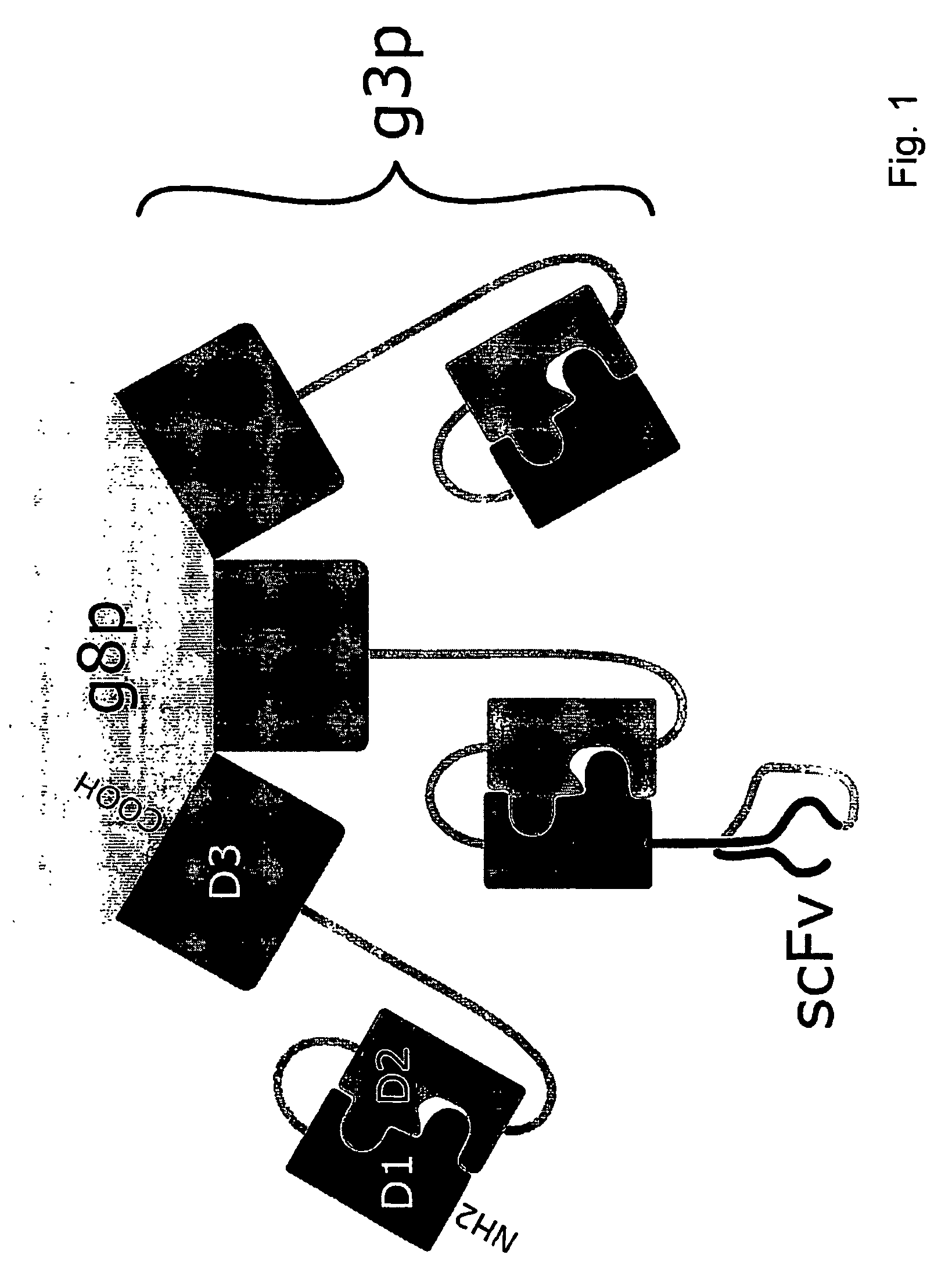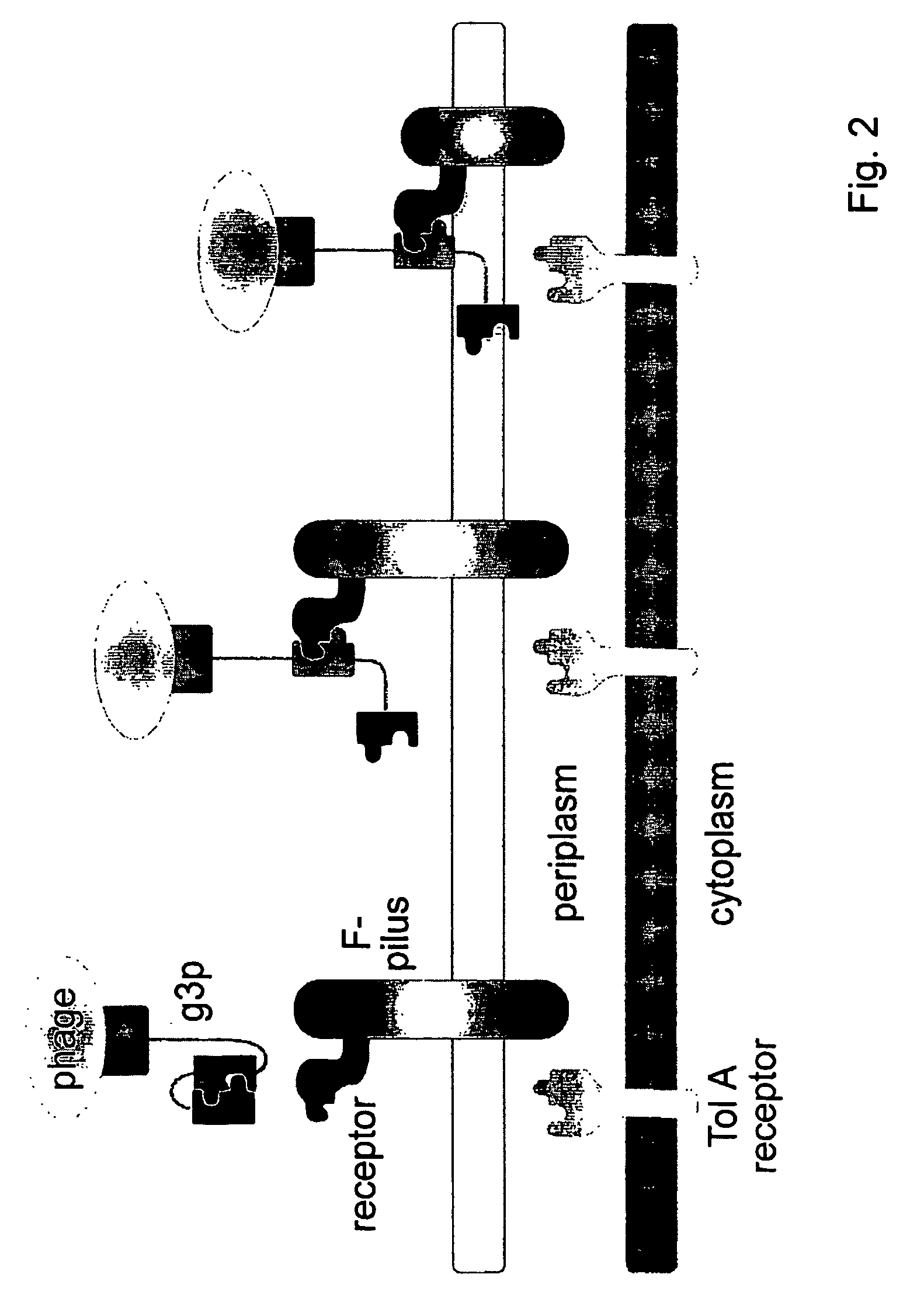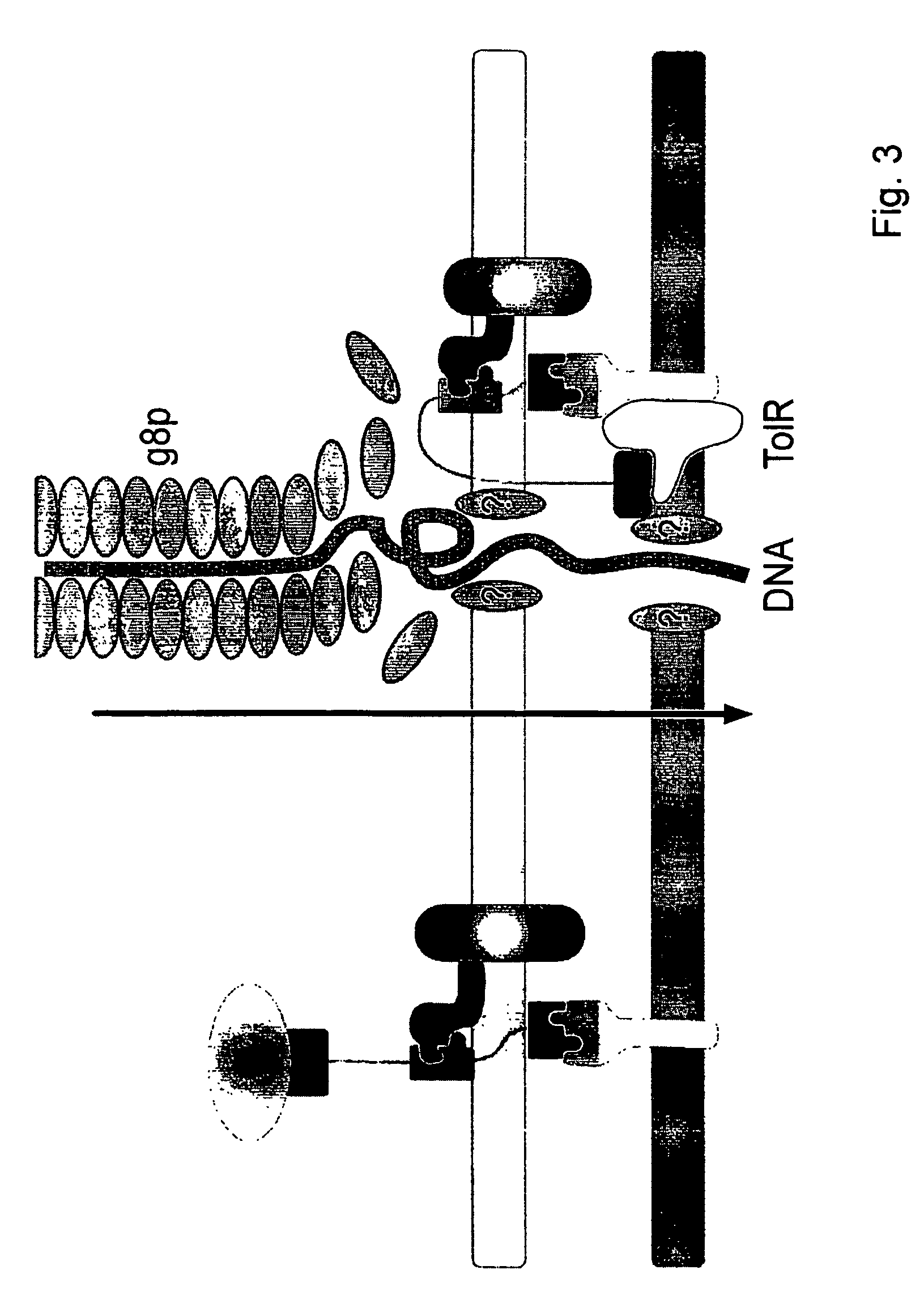Chimaeric phages
a technology of chimaeric phages and phages, applied in the field of biotechnology, can solve the problems of increasing the percentage of phages containing vector sequences when co-expressed, affecting the use of display libraries, and unable to express g3p-x. , the disadvantage of g3p-x is significan
- Summary
- Abstract
- Description
- Claims
- Application Information
AI Technical Summary
Problems solved by technology
Method used
Image
Examples
example 1
[0122]Cloning of the pBAD / gIII-g3 Helper Vector.
[0123]The full Open Reading Frame (ORF) of the g3 gene was generated by using M13K07 (Gibco-BRL) DNA as a template in a standard PCR reaction together with g3 ORF NcoI Forward (SEQ ID NO:5) and g3 ORF XbaI Backward (SEQ ID NO:6) primers. The purified PCR product and the pBAD / gIII vector were both digested with NcoI (NEB) and XbaI (Roche Diagnostics) simultaneously in buffer H (Roche Diagnostics) for 4 h at 37° C. After ligation, isolation, electroporation in TOP10 (Stratagene) and LMG (Stratagene) cells, two correct clones were selected by sequencing and grown on a large scale followed by the isolation of the DNA. The DNA was reprecipitated with 70% ethanol and in the presence of KAc and the pellet was washed twice with 70% ethanol. After drying, the DNA was dissolved in sterile bi-distilled water and stored at −20° C. until use. The resulting plasmid pBAD / gIII-g3 is depicted in FIG. 5. This helper vector contains the full sized g3 gen...
example 2
[0124]Cloning of the g3-Minus Helper Phage Genome.
[0125]VCSM13 (Stratagene) is a widely used helper phage, however, its sequence is not publicly available. The full DNA sequence of the VCSM13 genome was determined and is depicted schematically in FIG. 6A and in nucleotide order in FIG. 6B. The use of g3 minus HindIII Forward (SEQ ID NO:3) and g3 minus HindIII Backward (SEQ ID NO:4) primers and M13K07 and VCSM13 as templates in a standard PCR reaction resulted in the formation of a PCR product that contained HindIII sites at both ends of the DNA. After separation, gel isolation and purification, digestion with HindIII (Roche Diagnostics) and re-purification of the DNA, the product was self-ligated under standard ligation conditions and the resulting helper phage genome, named g3-minus, was electroporated into XL1 Blue cells (Stratagene).
[0126]The transformed cells were resuspended in 5 ml 2TY medium and cultured shaking at 37° C. for 1 h. Kanamycin was added to an end-concentration o...
example 3
[0128]Cloning of the D3 Helper Phage Genome with a Partially Deleted g3 Gene.
[0129]The construction of helper phage genome that express only the D3 part of the g3 gene was comparable to the above described g3-minus helper phages with the exception that the primers used were D3 BamHI Forward (SEQ ID NO:1) and D3 BamHI Backward (SEQ ID NO:2) primers in order to generate the new genome. All other procedures were the same as for the g3-minus procedure, except for the use of BamHI instead of HindIII. In the end, the DNA of two correct clones was kept and stored at −20° C. The final VCSM13-derived construct of the helper phage genome (named D3: it only expresses this part of the g3 gene that does not contribute to the infectiousness of the phage particle) is depicted in FIG. 7A, while the D3 sequence is depicted in FIG. 7B.
PUM
 Login to View More
Login to View More Abstract
Description
Claims
Application Information
 Login to View More
Login to View More - R&D
- Intellectual Property
- Life Sciences
- Materials
- Tech Scout
- Unparalleled Data Quality
- Higher Quality Content
- 60% Fewer Hallucinations
Browse by: Latest US Patents, China's latest patents, Technical Efficacy Thesaurus, Application Domain, Technology Topic, Popular Technical Reports.
© 2025 PatSnap. All rights reserved.Legal|Privacy policy|Modern Slavery Act Transparency Statement|Sitemap|About US| Contact US: help@patsnap.com



